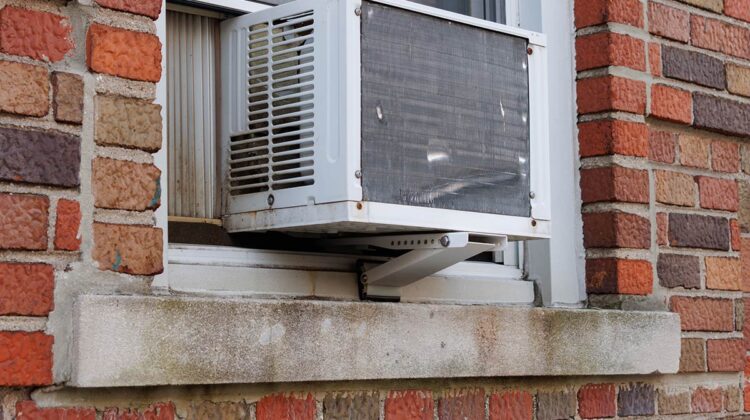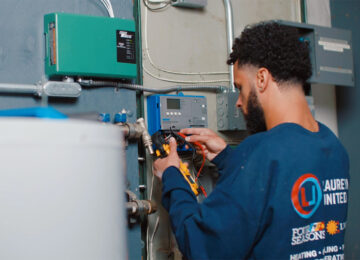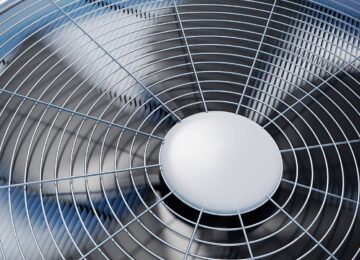When the weather heats up, trust your window air conditioner to keep you and your family chilled. But if it’s been a while since you serviced yours, now is an ideal time to show some TLC. Cleaning your AC on the regular not only ensures that it runs energy-efficiently but also combats mold growth which can have dangerous health effects. Keep cool all summer long by maintaining a clean unit!
You don’t need to be an HVAC expert or purchase costly equipment – all it takes is some common household materials and this uncomplicated step-by-step guide to care for your window AC. That way, you can ensure that it’s prepared to keep the temperature in check throughout sweltering summer days and beyond!
How to Clean a Window AC Unit
Combat dust and debris buildup in your window air conditioner by using our comprehensive guidelines for cleaning it. Doing so will help keep the AC functioning optimally, ensuring a pleasant indoor climate all year long!
To ensure an efficient and thorough clean, you’ll need the following items:
- A screwdriver (optional)
- A vacuum with a hand attachment or regular handheld vacuuming device
- A bucket of warm water mixed with soap or detergent
- Bristle brush and toothbrush to reach those hard-to-reach spots
- Can of compressed air for dusting off tight crevices
- Cleaning rag/cloth for wiping down surfaces
- Spray bottle filled with hydrogen peroxide solution (3%)
Step 1: Clean the air filter.
To begin cleaning your air conditioner, make sure that it is unplugged from any power source. Afterward, locate and remove the filter on the AC unit. Some window units have filters which can be taken out with ease while others may require you to unscrew the front cover with a screwdriver before pulling it out – so ensure that you consult your model’s manual for guidance.
To start, use a hand vacuum to remove all dust and debris from the filter. Then, take a bucket of soapy water with a bristle brush in-hand so you can clean the filter without damaging it. Gently scrub away any remaining dirt until your hands come up squeaky clean. Finally, ensure that your filter is fully air dried before reinstalling it back into its designated spot!
Step 2: Clean air-conditioner coils and fins.
Identify the evaporator coils and fins of your unit – components that convert hot air into cool air – and then delicately brush them with a soft-bristle toothbrush. Do take extra precaution to not bend or harm these elements as you clean them. Finish cleaning by lightly spraying compressed air on all sides to get rid of any remaining dust particles.
Step 3: Clean the exterior and grill.
To keep your air conditioner in prime shape, begin by wiping down the grill using a damp cloth or rag. If grime has built up significantly, remove the grill following the manufacturer’s directions and submerge it in warm soapy water with a brush or rag to scrub between its gaps. Make sure it is fully dry before replacing it onto the unit. Afterwards, use another damp cloth to wipe off any dirt on top of and around your window AC unit; if there are drains/drip trays present, be sure to empty them out then clean them thoroughly. Let all components dry entirely prior to putting everything back together again!
Step 4: Prevent mildew and reassemble.
Utilizing hydrogen peroxide in a spray bottle, clean the exterior areas of your air conditioner where airflow passes through to prevent mold and mildew. When finished, ensure that all parts are dried fully before reassembling them. Now is the time to sit back, relax, and take pleasure in your fresh AC as it circulates cool air throughout your residence!
How Often Should I Clean My Window Air Conditioner?
Taking care of your window air conditioner is necessary for ensuring it works at its peak performance, and the most essential part to maintain routinely is the filter. To keep it running optimally, you should be washing your removable filter once a month. As well as this regular maintenance, depending on how often you use your AC unit, eventually you may need to replace the filter too – many units have an indicator light that will let you know when!
During the months when your window AC unit is not in use, you have two options: either remove and store it or invest in a window cover for off-season protection. Both of these actions will reduce the amount of dirt and debris that can enter into – or settle onto – your machine.




